There’s often some confusion about which American Airlines wide body jets have which business class seats. In this post, I’d like to provide a rundown of which seats you should expect to find in business class on various long haul flights. I figure this is an especially good time to look at this, given that American has just introduced an all-new business class seat.
Note that this is separate from the seats you’ll find in premium cabins on narrow body domestic flights, as those are very different different…
American’s four business class seats
American has four different kinds of business class seats on its wide body aircraft, with the fleet comprised of Boeing 777s and Boeing 787s. The good news is that all American wide body jets feature fully flat beds and direct aisle access from all business class seats. Nonetheless, people have different preferences, and not all seats are created equal.
I actually think American’s long haul business class hard product is an advantage that American has, in terms of consistency:
- United Polaris business class is now available on most long haul aircraft, though the catch is that United has some 777s with eight seats per row in business class (used primarily for domestic flights), and also has some 757s that are used for long haul flights, including across the Atlantic
- Delta One business class lags the competition in terms of consistency of long haul product; specifically, I think Delta’s 767 business class is inferior to the business class products offered by American and United
So with the above out of the way, let’s take a look at American’s four types of business class seats, from most common to least common. Then in the next section, I’ll cover on which planes you’ll find which seats.
Collins Aerospace Super Diamond seat
The Collins Aerospace Super Diamond product is American’s most common business class seat. This is a reverse herringbone product in a 1-2-1 configuration, with all seats facing forward. It’s also the same seat that you’ll find on many airlines nowadays.
Aside from American’s brand new business class (which is least widely available), I’d say that this is the product that’s most popular with passengers. There’s not much variance in quality between seats, the seats are still quite modern, and tech is good. The only catch is that I find the footwell in this product to be quite small, as is common in many modern business class seats.
See my review of American’s Collins Aerospace Super Diamond seat.
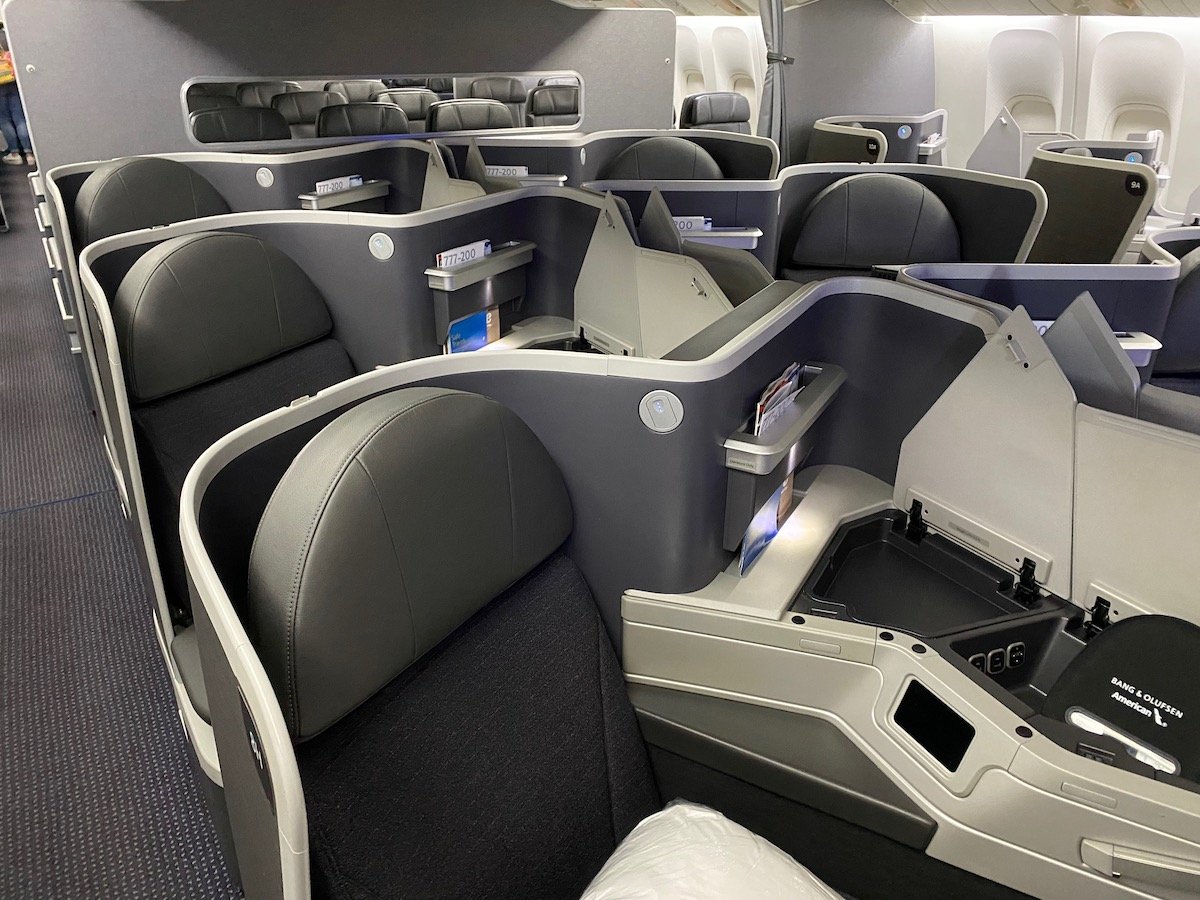
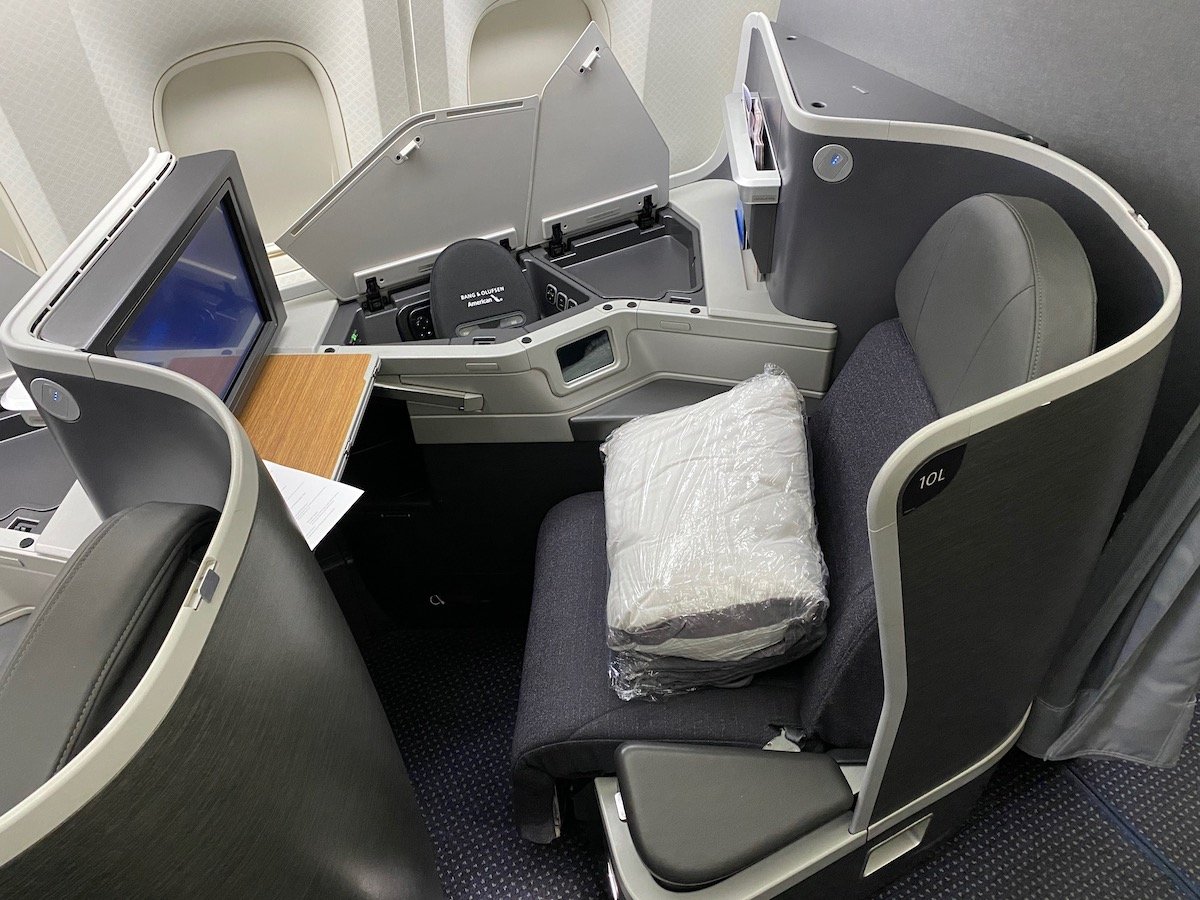
Safran Concept D seat
The Safran Concept D seat is American’s next most common business class seat. This is a staggered product in a 1-2-1 configuration, with seats alternating between being forward and rear facing. You won’t find these seats on any other airlines.
Many people don’t like these seats due to the lack of storage, plus there’s an issue whereby these seats “shake,” due to how they’re paired. Furthermore, these are some of American’s older business class cabins, so many of them have some wear and tear. However, I quite like that these seats have ottomans rather than footwells, so it’s quite comfortable in bed mode.
See my review of American’s Safran Concept D seat.
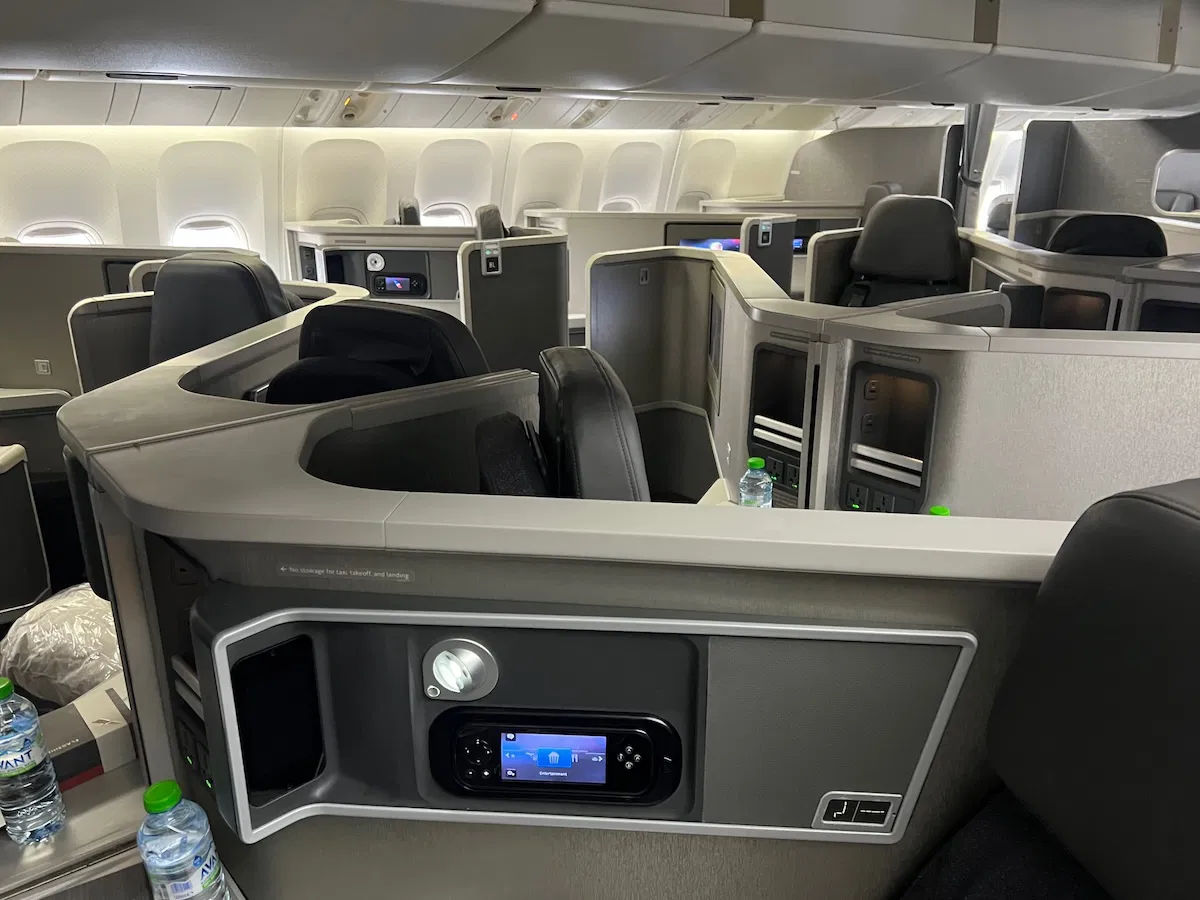
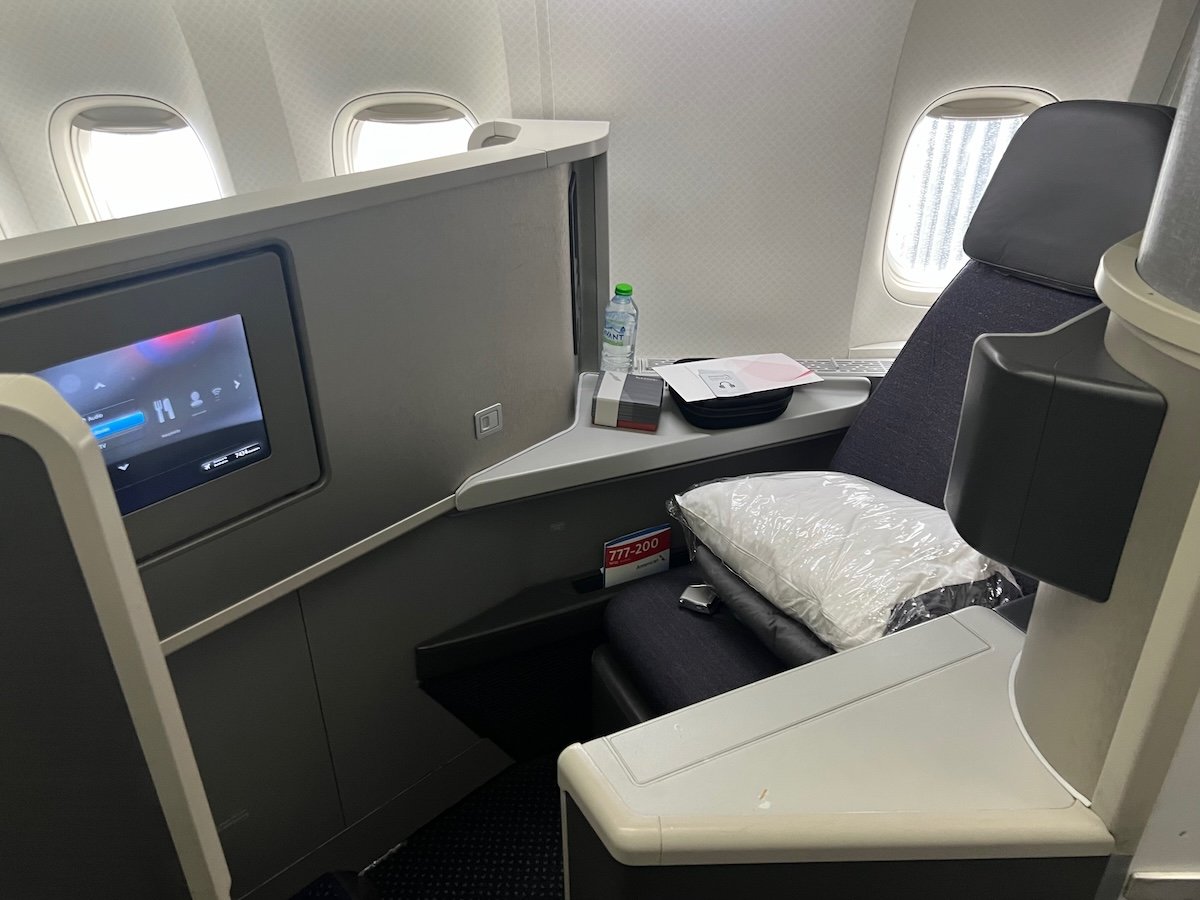
Safran Cirrus seat
The Safran Cirrus seat is American’s third most common type of business class seat. This is a reverse herringbone product in a 1-2-1 configuration, with all seats facing forward.
Personally I think the Collins Aerospace Super Diamond seat is just a bit more “evolved” than the Safran Cirrus seat, but many people like this product as well. Note that within the next couple of years, you’ll no longer find this seat on any American plane, so it’s slowly on the way out…
See my review of American’s Safran Cirrus seat.
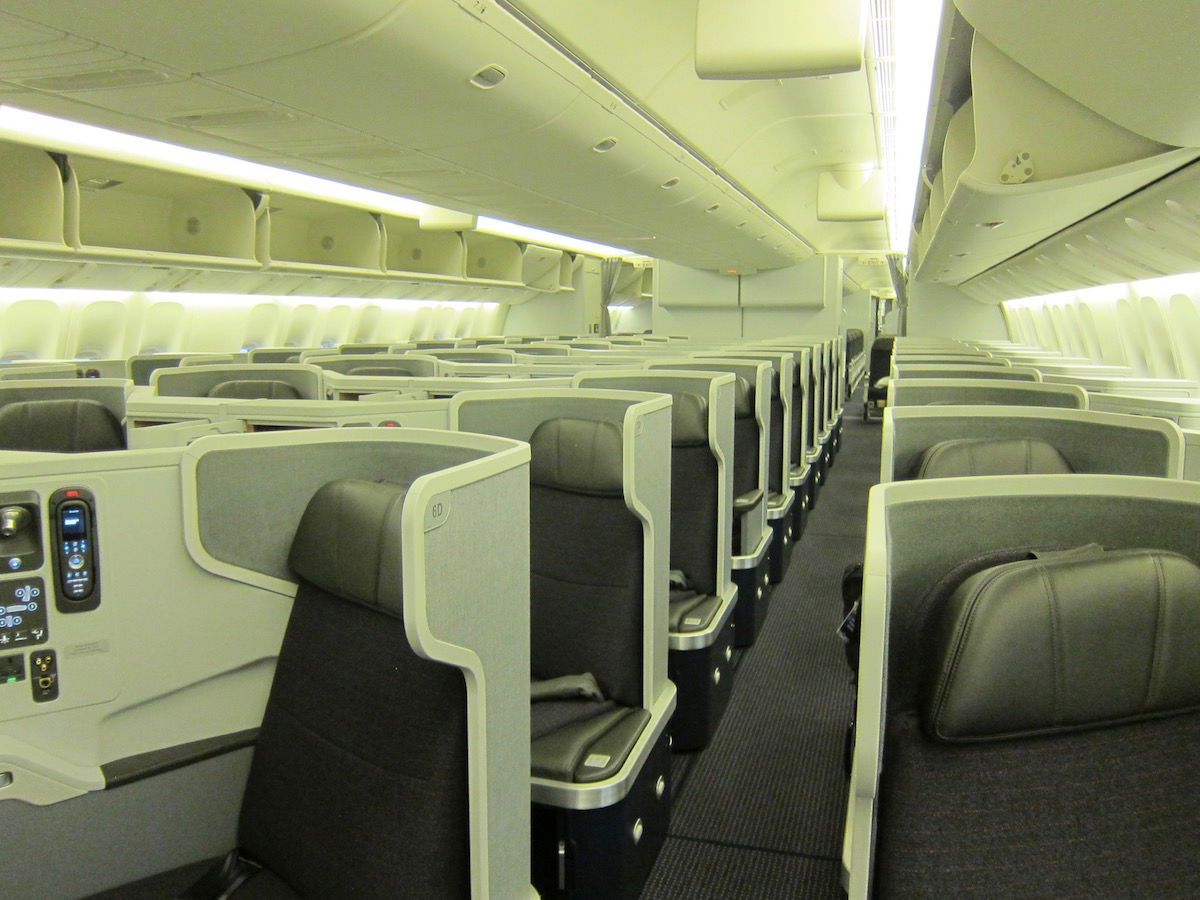
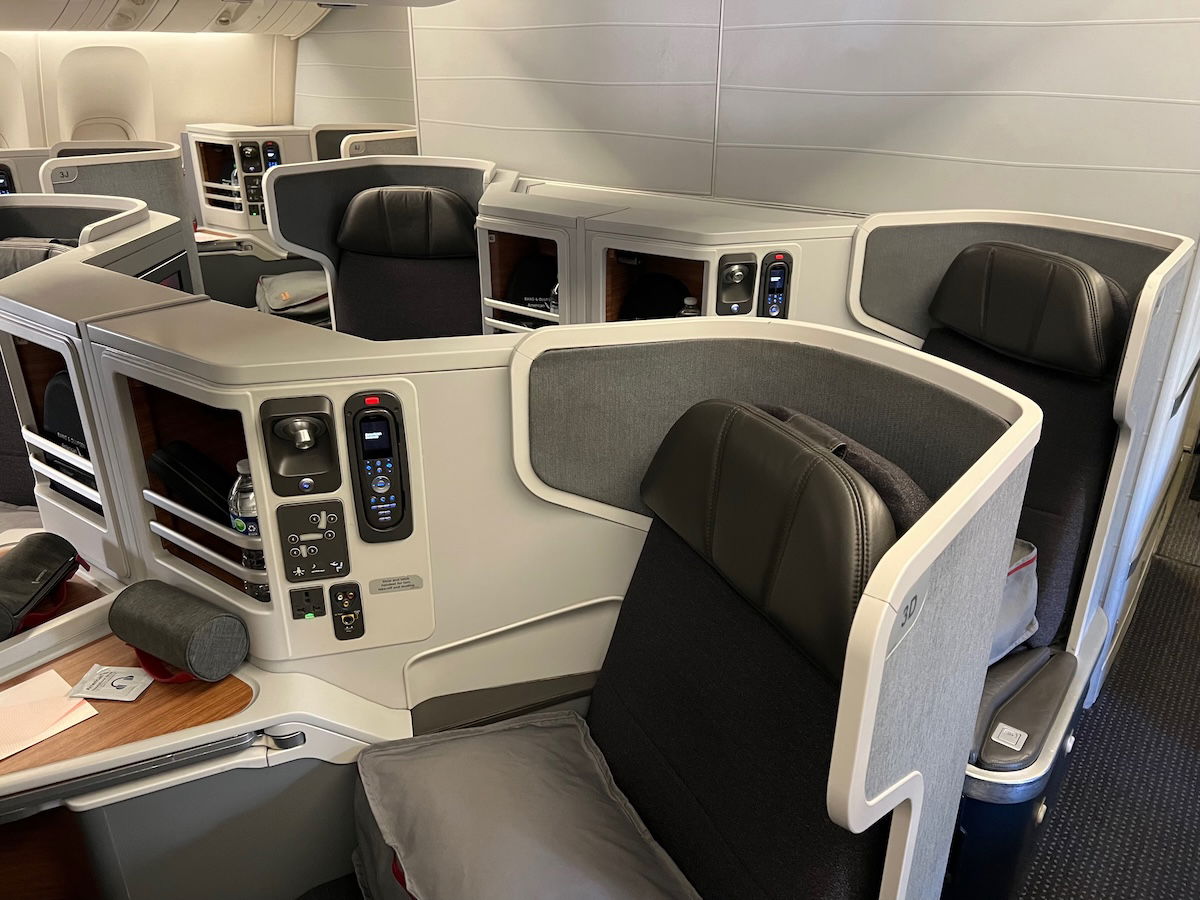
Adient Ascent seat
The Adient Ascent seat is American’s brand new business class seat. This is a reverse herringbone product in a 1-2-1 configuration, with all seats facing forward.
This seat is significantly upgraded over American’s previous reverse herringbone seats, with each seat having a door, and greatly upgraded tech. This includes bluetooth audio, upgraded Visasat Wi-Fi, and lots of charging options, with USB-A, USB-C, AC, and wireless charging.
See my review of American’s Adient Ascent seat.
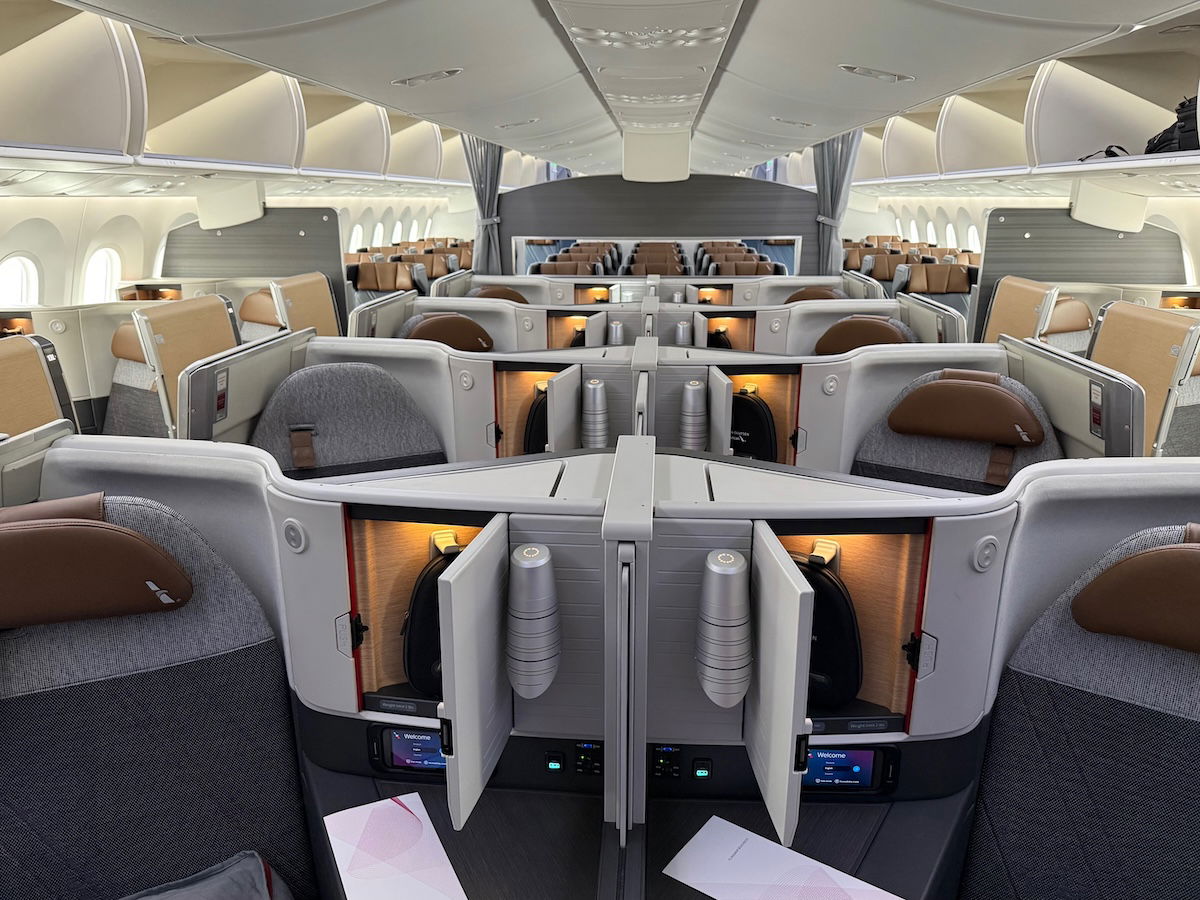
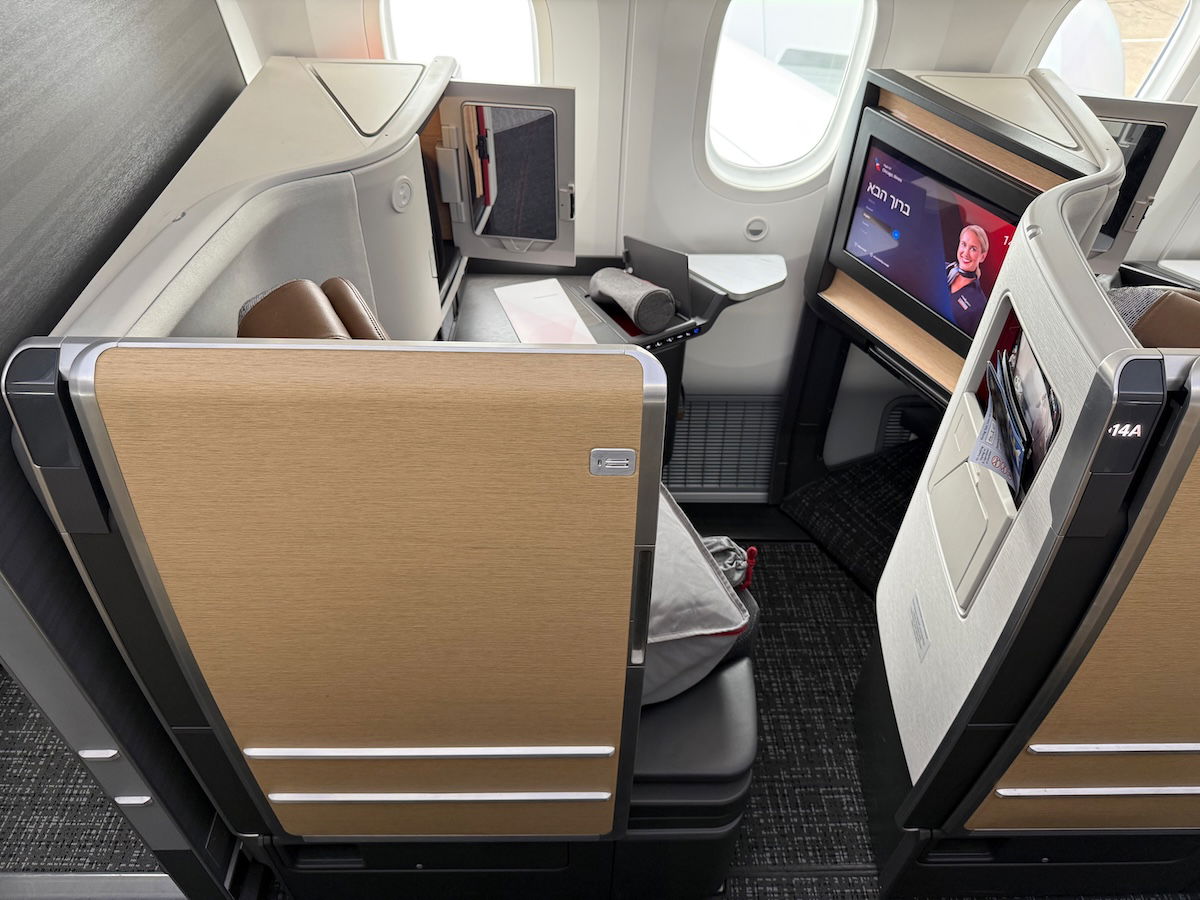
American’s business class seats by aircraft
While the above covers American’s four types of long haul business class seats, let’s talk about which seats you’ll find on which aircraft. Specifically, American flies four long haul aircraft variants, all from Boeing — the 777-200ER, the 777-300ER, the 787-8, and the 787-9. One of those jets has only one type of business class seat, while three of the jets have two kinds of business class seats.
American’s Boeing 777-200ER business class seat
American has 47 Boeing 777-200ERs in its fleet, each with 37 business class seats. Of those jets, 28 have the Collins Aerospace Super Diamond seats, while 19 have the Safran Concept D seats. As you can tell, the fleet is split about 60% and 40%.
Since the number of seats is identical, American swaps these planes between routes interchangeably, so there’s no way to know at the time of booking which product you’ll get. By default, American will display the Super Diamond seat map (since those planes are more common). Then within a few days of departure, American starts to firm up aircraft assignments, and adjusts seat maps accordingly.
The way to spot the difference on the seat map is based on whether seats in alternating rows have a little “V” cutout at the top. The seats with those cutouts are rear facing seats. So if the seat map has the cutout (shown with the 787-8 seat map a couple of sections down), it represents the Safran Concept D configuration, while if it doesn’t, it represents the Collins Aerospace Super Diamond configuration.
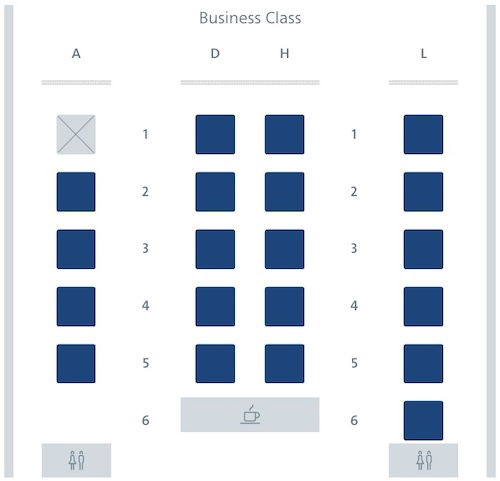
American has no plans to reconfigure existing 777-200ERs with the new business class.
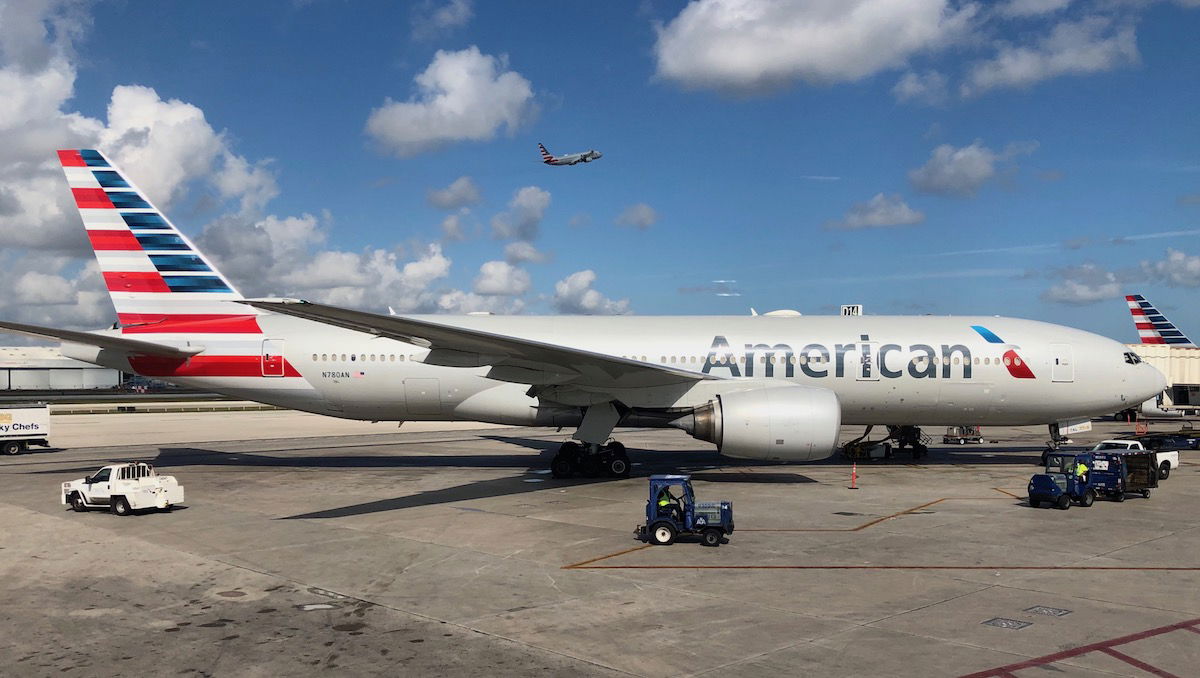
American’s Boeing 777-300ER business class seat
American has 20 Boeing 777-300ERs in its fleet, each with 52 business class seats. These planes all feature the Safran Cirrus product, so you know exactly what you’re going to get.
Note that American plans to reconfigure its 777-300ERs with the new business class, and it’s expected that this work could start around late 2025. Once these planes are reconfigured, we’ll also see first class eliminated.
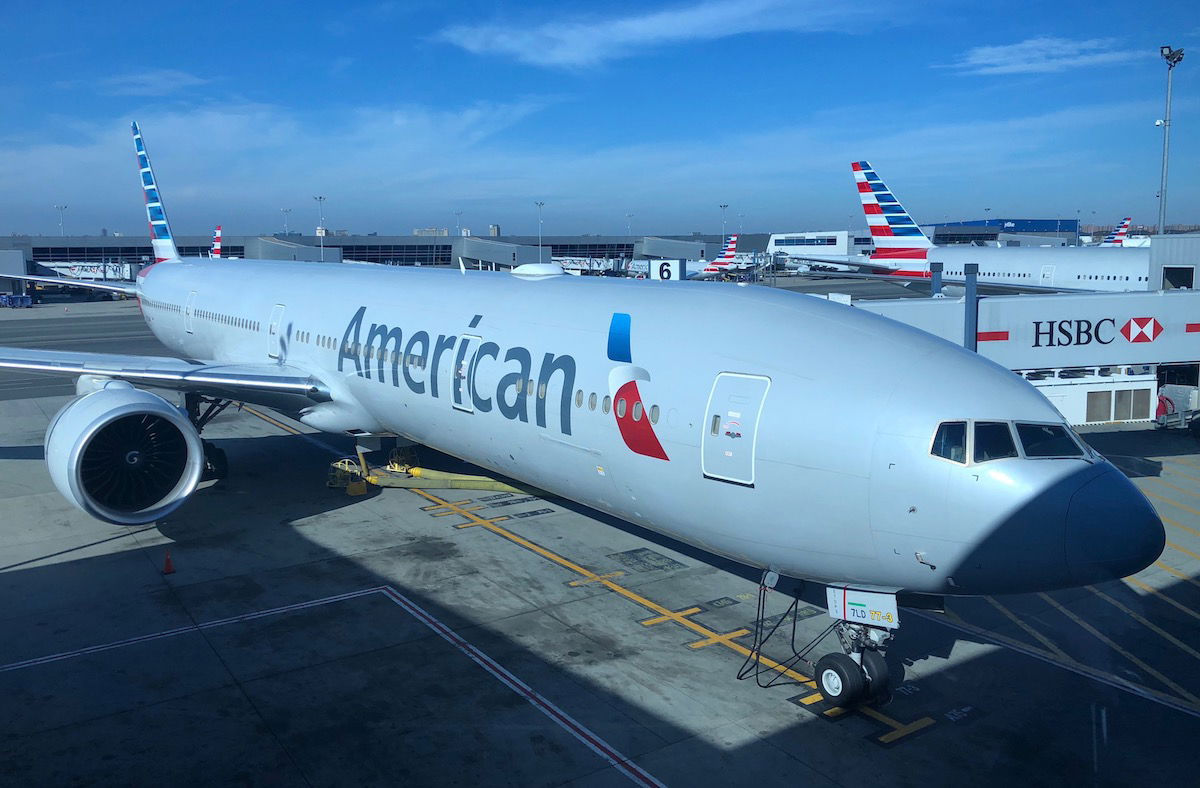
American’s Boeing 787-8 business class seat
American has 38 Boeing 787-8s in its fleet, each with 20 business class seats. Of those jets, 20 have the Safran Concept D seats, while 18 have the Collins Aerospace Super Diamond seats. As you can tell, the fleet is split pretty evenly, with the slight edge going to the Safran Concept D seats.
Since the number of seats is identical, American swaps these planes between routes interchangeably, so there’s no way to know at the time of booking which product you’ll get. By default, American will display the Safran Concept D seat map (since those planes are more common). Then within a few days of departure, American starts to firm up aircraft assignments, and adjusts seat maps accordingly.
The way to spot the difference on the seat map is based on whether seats in alternating rows have a little “V” cutout at the top. The seats with those cutouts are rear facing seats. So if the seat map has the cutout, it represents the Safran Concept D configuration, while if it doesn’t (shown with the 777-200ER seat map a couple of sections up), it represents the Collins Aerospace Super Diamond configuration.
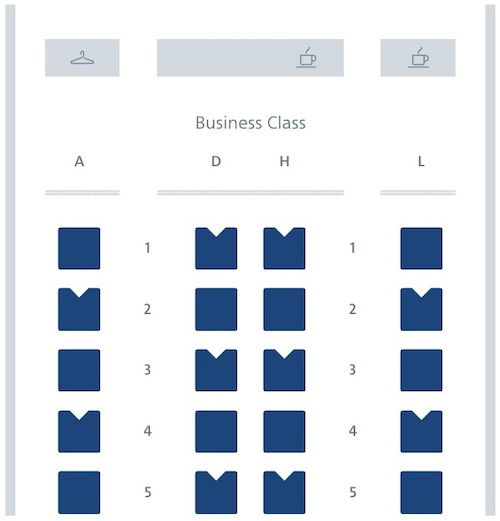
American has no plans to reconfigure existing 787-8s with the new business class.
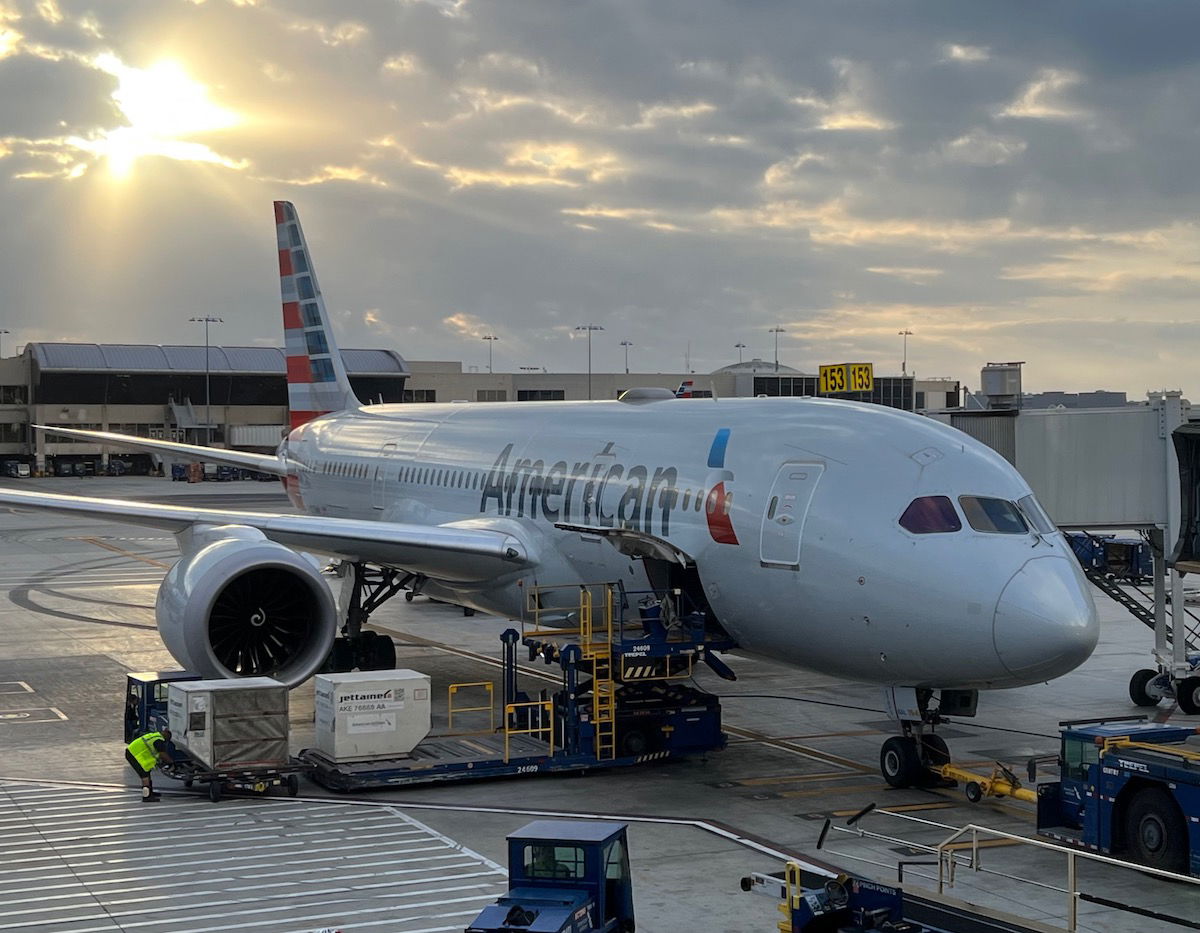
American’s Boeing 787-9 business class seat
American has 27 Boeing 787-9s in its fleet, and these have two very different layouts, and you know at the time of booking which product you’ll get.
22 of these 787-9s (designated on American’s website as “789-Boeing 787”) feature 30 business class seats. These planes feature the Collins Aerospace Super Diamond product, the same as on some 787-8s, so you know exactly what you’re going to get.
American has also introduced a new business class product, which debuted on the 787-9. Specifically, American has five 787-9s (designated on American’s website as “78P-Boeing 787”) featuring 51 business class seats. These planes feature the new Adient Ascent product, which is without a doubt American’s best business class seat.
American has a total of 30 of these new 787-9s on order, so you can expect another 25 to join the fleet in the coming years.
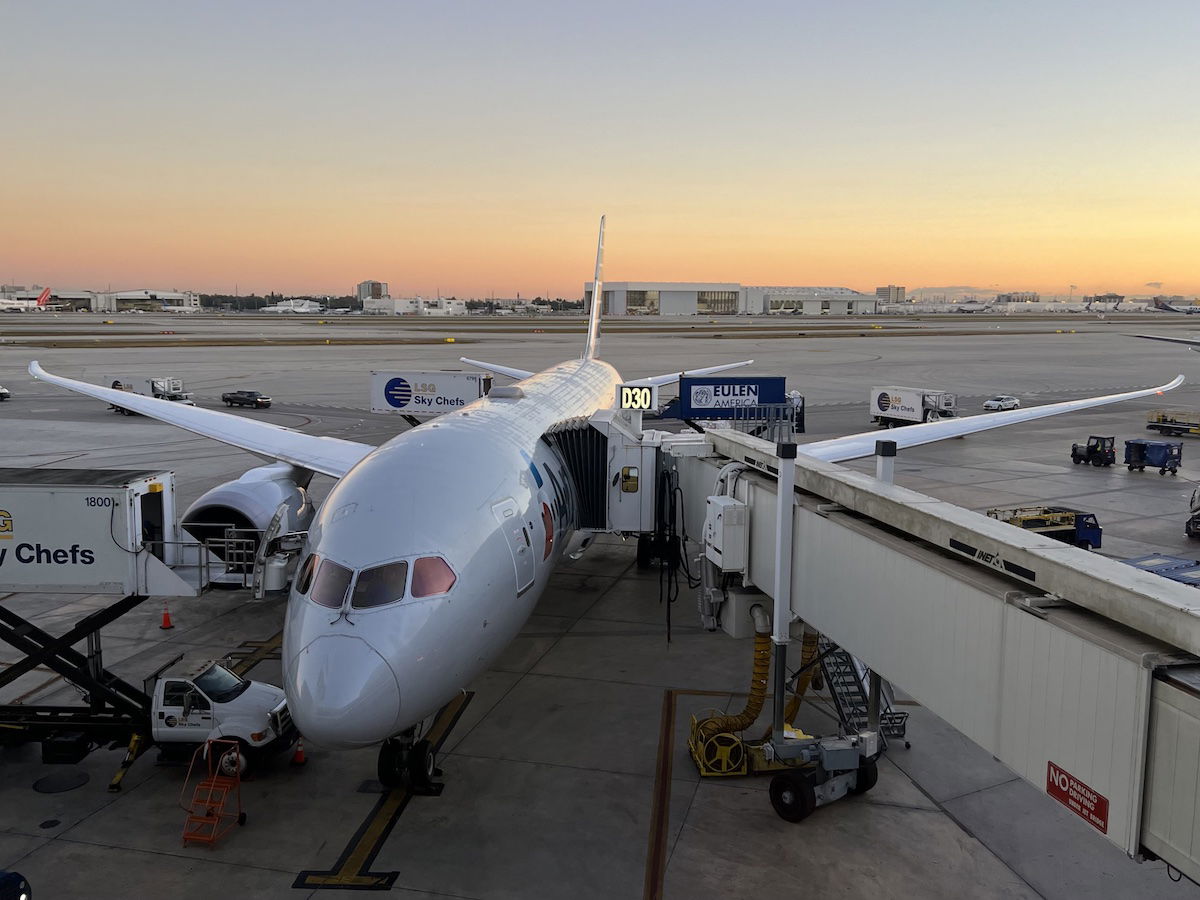
Bottom line
American has four different long haul business class seats, and for the average traveler, it can be hard to keep track of which seat you’ll find on which aircraft. Hopefully the above is a useful rundown.
To summarize, all 777-300ERs have Safran Cirrus seats, 777-200ERs and 787-8s have a mix of Safran Concept D seats and Collins Aerospace Super Diamond seats, and 787-9s have a mix of Collins Aerospace Super Diamond seats and Adient Ascent seats.
For 777-200ERs and 787-8s, you won’t know until a few days before departure which type of product is scheduled for your flight. Meanwhile for 787-9s, American schedules the type of product you can expect more reliably, since the two versions of the plane have very different layouts.
The good news is that all four of these seats are pretty great, at least in my opinion. Obviously the Adient Ascent seat is the best, but the other three are competitive as well.
What do you make of American’s long haul business class cabins?







